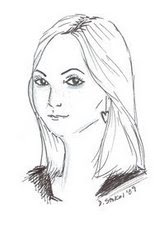One belongs to Dr. Stephen Trudeau, a psychologist and longtime biker with a passion for scenic highways. The other belongs to his 9-year-old son, Devin, a fourth-grader who loves math and riding to school with his dad. But instead of traveling on the back of his dad's bike, Devin rides alongside, in the comfort and safety of a shiny red sidecar. Father and son are among the 140 members of the SoCal Sidecar Club, and both will be donning their matching helmets to ride into Los Angeles' Griffith Park next weekend for an annual rally celebrating the legacy of their favorite pastime. "I rarely see another sidecar motorcycle," said Thousand Oaks resident Trudeau. "So it's great to get together with other enthusiasts and admire the different uniqueness of the machines."
The Griffith Park Sidecar Rally, being held Oct. 19, has been a hub for sidecar enthusiasts and curious spectators for 37 years. According to Louis Vanderveen, president of the SoCal Sidecar Club, thousands of attendees come from around the country - some even from Europe - for the event.
"It is one of the largest sidecar-only rallies anywhere in the world," said Vanderveen. "It is also the oldest and longest running."
Spectators show up to admire 200 types of sidecars, all as unique and colorful as their owners.
Vanderveen's own sidecar is sparkling white, decorated with a Union Jack that recalls the first era of the sidecar, in early 20 th-century Britain.
The economic hardship of two world wars boosted the popularity of this cheap and simple mode of transportation, and the sidecar quickly became an asset to civilians and military alike.
Because sidecars allowed soldiers room to operate a machine gun without eliminating the efficiency of a motorcycle, they quickly became a global military trend. Meanwhile, the economic efficiency of the sidecar motorcycle sparked a cultural phenomenon across Europe.
A half-century later, economic concerns are again a reason for downsizing by a wheel or two. But for many sidecar enthusiasts, their three-wheel drives, which start at about $2,000, allow for something much more important.
Trudeau had been riding motorcycles for most of his life, but two years ago he upgraded to a gleaming red sidecar motorcycle as a way of fusing one aspect of his life with another.
"Devin was born with cerebral palsy, and that was why we got the sidecar," said Trudeau. "I've always been a motorcycle enthusiast, but I wouldn't be able to share that with him - he wouldn't be able to ride on the back. So the sidecar was a natural evolution for us."
Father and son ride with the club once a month along the scenic routes of Southern California, to places such as Santa Barbara and Ojai, as well as on weekend camping trips together.
"We ride because we just like to enjoy it and spend time together and watch the scenery," said Trudeau. "It's a much more relaxed way of riding."
Vanderveen also bought a sidecar so he could share the motorcycling experience with others. As task-force leader for the fundraising program Ride for Kids, Vanderveen organizes charity events to raise money for the Pediatric Brain Tumor Foundation and to give children affected by brain tumors a chance to ride in a sidecar at the nationwide events.
Because most manufacturers customize their sidecars, modern versions have come a long way since the first boxy attachments of the early 1900 s.
Not only are there more safety features available, but the ride is smoother and more comfortable. From simple attachments to semi-luxurious two-seater cabins, sidecars have transitioned from a practical accessory to a unique personal statement.
Doug Bingham, founder of the Griffith Park Sidecar Rally, has an enclosed wooden sidecar with two seats and plenty of legroom - all hand-built. His company, Side Strider Inc., has been creating custom sidecars since 1969 for a global market, and many of the creations are designed to be comfortable and spacious enough for long-distance traveling.
Bingham also started the SoCal Sidecar Club as a means for three-wheelers to get together on a regular basis.
"We go on monthly rides and arrange trips to motorcycle museums and private collections around Southern California," said Bingham. "It's a community as well as a hobby."
The club is now run by Vanderveen, who says members come from all walks of life, spanning age ranges and reasons for riding.
"Everybody loves a sidecar," said Vanderveen. "You never go anywhere without drawing all sorts of attention. Car drivers will give the 'thumbs-up' and truckers will honk their horns. Besides having a very practical function, sidecars are just plain cool."


No comments:
Post a Comment